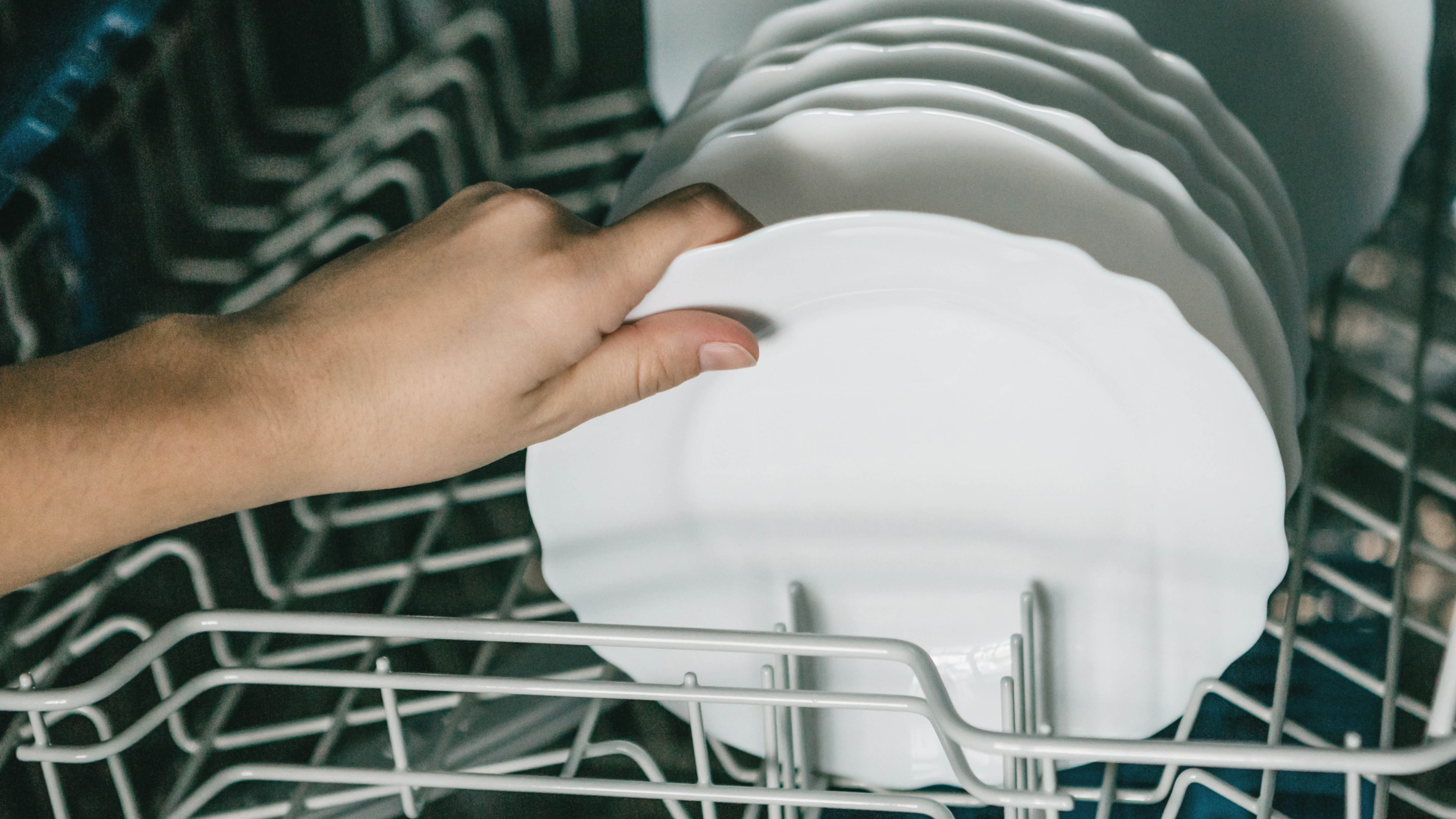How to load a dishwasher the right way
Ever had an argument over how to load a dishwasher? Here’s the final say

How to load a dishwasher properly is something we’ve all argued about at least once. While it seems simple enough to do, there are always debates over what should go where and why. Is it any wonder when there’s little guidance given in the dishwasher itself, and the variation of racks and baskets you can find in different models? And with more dishwashers having a third rack, it can become even more complicated.
Luckily, we’ve pulled together a guide to close this argument once and for all — here’s how to load a dishwasher the right way.
Before you go guessing where to put plates and glassware, it’s always a good idea to refer to your manual. This should contain pictures of loading recommendations for the upper and lower racks as well as what you shouldn’t wash in the dishwasher. If no recommendations are given, or your manual is missing, follow these guidelines:
Once you've gotten loading down, remember there are certain things you should never put in a dishwasher.
How to load plates and bowls
Large dinner plates as well as bowls should be loaded in the lower rack. Each plate should sit between the prongs and shouldn’t touch each other, so the water can flow through freely. Rinsing your plates prior to loading isn’t necessary, but you should scrape off any residual food as this could block the filter.
You might notice that some of the prongs on the lower racks are spaced more widely apart — these are for bowls and wider dishes, whereas the tightly-spaced prongs are actually for your dinner plates and side plates.
Small bowls and saucers can be loaded in the upper rack, but make sure that they’re not catching on the third rack, if you have one. If you’re washing mugs, these too should be washed on the upper rack and should be placed upside down and lined up along the sides.
Get instant access to breaking news, the hottest reviews, great deals and helpful tips.
If you put tea cups in the dishwasher, these can actually be stacked on top of the side racks on the upper rack. Just make sure they can fit under the third rack.

How to load glassware
Fine glassware should always be washed in the upper rack because of its fragility. Tall glasses and tumblers should be placed along the sides, upside down and not touching so the water can flow through. The prongs are more often used to separate glassware/crockery in the upper rack than to actually be stacked on. Though you can use them for this if it helps.
Most dishwashers come with wine glass stem holders which can fold down from the sides of the upper rack. You can either lean your wine glasses against these shelves, or for some they can even slot into place. This keeps them secure during the wash and stops them from tumbling over.
Shorter glasses should be placed towards the center of the upper rack, while taller items are stacked around the edges.
How to load cutlery
How to best load your cutlery will depend on whether you’re using a cutlery basket or a third rack. You want each knife, fork and spoon to be separated so it gets a thorough clean. This is easy on a rack as the prongs will separate the cutlery, whereas a basket will usually come with a dividing lid. It can be very tempting to remove this to fit more cutlery in the basket, but don’t do it as they won’t be washed properly.
If you’re using a basket, forks and spoons should be placed handle-down, while knives should be handle-up for safety reasons. There should be a dedicated space in the lower rack for the basket to sit. If you’re using a third rack, the prongs with wider gaps will fit thicker pieces of cutlery.

How to load pots and pans
Pots and pans can be loaded in both the upper and lower racks; however, the lower rack will give the best cleaning performance. Make sure that these don’t cover other items in the dishwasher and you should also check any protruding handles won’t block the spray arm. Give the spray arm a spin before you start a cycle to be sure. If it’s blocked and you can’t reposition the pan, you can always raise the upper rack.
When placing pots and pans, you can make the most use of space by leaning them at an angle against the prongs, rather than placing them flat.
What you shouldn't put in the dishwasher
While you might be throwing anything and everything into the dishwasher, there are actually some items which you should avoid:
- Chef’s knives or any professional knives shouldn’t go in the dishwasher because it can dull the blade, lead to rust and discolor it as well. That’s why dishwashers are the worst thing for knives.
- Anything wooden also shouldn’t go in there - even if it’s just a wooden handle. The heat and moisture within a dishwasher will cause it to splinter and crack.
- Cast iron should never go in a dishwasher either. This is because the detergent can damage the nonstick surface and lead to rust. Washing by hand is the best way if you’re asking how to clean a cast iron skillet.
- Some pots and pans are not dishwasher safe, so you should never assume. Always check the care instructions.
- Anything overly delicate is also best washed by hand rather than in the dishwasher. Temperatures get very high in a dishwasher and the detergent is abrasive. So err on the side of caution with your crystalware and china.

Katie Mortram used to be a Homes Editor for Tom's Guide, where she oversaw everything from kitchen appliances to gardening tools, as well as smart home tech. Specializing in providing expert advice for cleaning and home manintenance, she now works as Household Advice Editor for Good Housekeeping.
